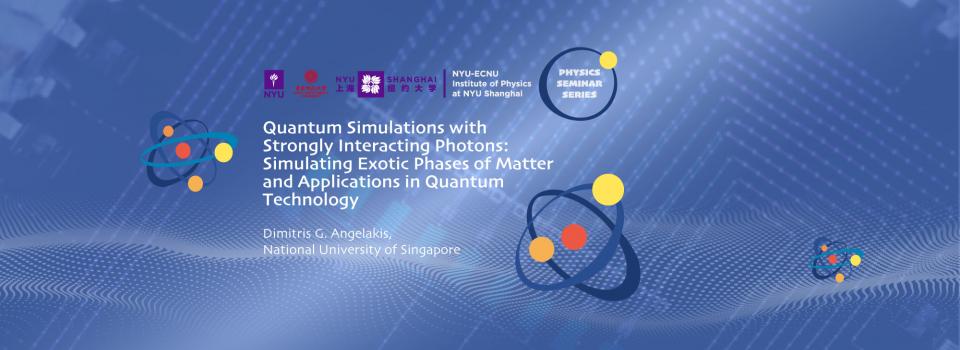
Abstract:
Classical computers require enormous computing power and memory to simulate even the most modest quantum systems. That makes it difficult to model, for example, why certain materials are insulators and others are conductors or even superconductors. R. Feynman had grasped this since the 1980s and suggested to use instead another more controllable and perhaps artificial quantum system as a "quantum computer" or specifically in this case a "quantum simulator".
I will briefly review in non-specialist terms the main results in this area including our early ideas on realizing Mott insulators, Fractional Hall states and Luttinger liquids with interacting photons [1,2]. After that I will present in more detail a recent experiment realizing the Hoeftstaedter butterfly and the many-body localization (MBL) transition using interacting photons in the latest superconducting quantum chip of Google [3]. A simple method to study the energy-levels-and their statistics - of many-body quantum systems as they undergo the ergodic to the MBL transition, was proposed and implemented. The formation of a mobility edge of an energy band was observed and its shrinkage with disorder toward the center of the bands was measured. Beyond the applications in understanding fundamental physics, the potential impact of quantum simulators in different areas of quantum and nano technology, material science as well as machine learning and big data processing will be touched upon.
References
- D.G. Angelakis and C. Noh “Many-body physics and quantum simulations with light” Report of Progress in Physics, 80 016401 (2016)
- "Quantum Simulations with Photons and Polaritons: Merging Quantum Optics with Condensed Matter Physics" by D.G. Angelakis (ed), Quantum Science and Technology Series, Springer, 2017, ISBN 978-3-319-52023-0.
- P. Roushan, C. Neill, J. Tangpanitanon, V.M. Bastidas, A. Megrant, R. Barends, Y. Chen, Z. Chen, B. Chiaro, A. Dunsworth, A. Fowler, B. Foxen, M. Giustina, E. Jeffrey, J. Kelly, E. Lucero, J. Mutus, M. Neeley, C. Quintana, D. Sank, A. Vainsencher, J. Wenner, T. White, H. Neven, D. G. Angelakis, J. Martinis, “Spectral signatures of many-body localization with interacting photons” in Science, 01 Dec 2017: Vol. 358, Issue 6367, 2017
Biography:
Dimitris Angelakis did his PhD at Imperial College in Quantum Optics followed by a St Catharine's College Cambridge research fellowship. The latter he held at DAMTP University of Cambridge and also at the Cambridge Centre for Quantum Computation. Since 2010 he is a Principal Investigator in the Centre for Quantum Technologies, National University of Singapore, leading a research group on quantum simulation and quantum computation. He recently received the 2018 Google Quantum Innovation Award for his work in quantum simulation of exotic phases of matter.
Seminar by the NYU-ECNU Institute of Physics at NYU Shanghai


